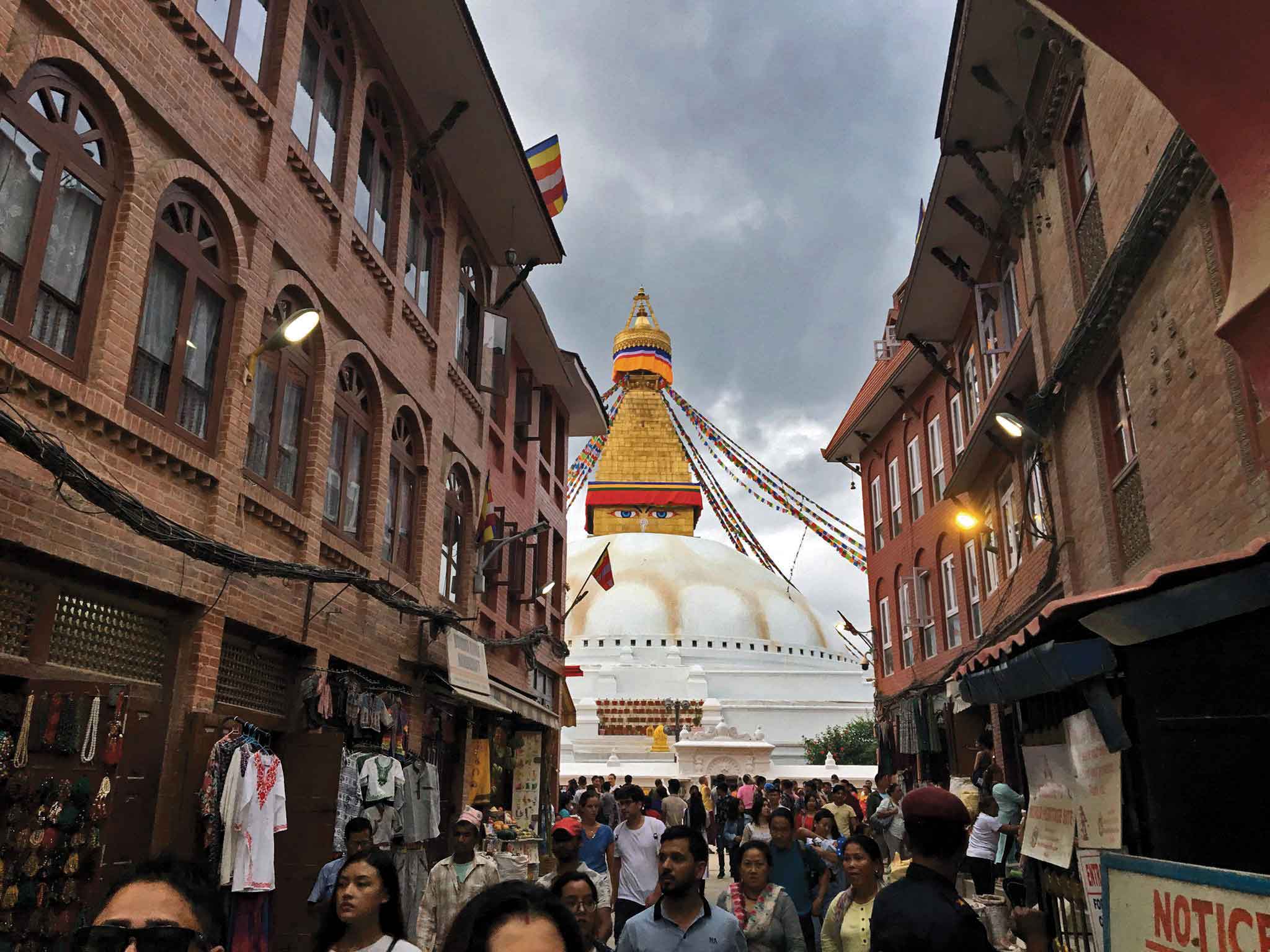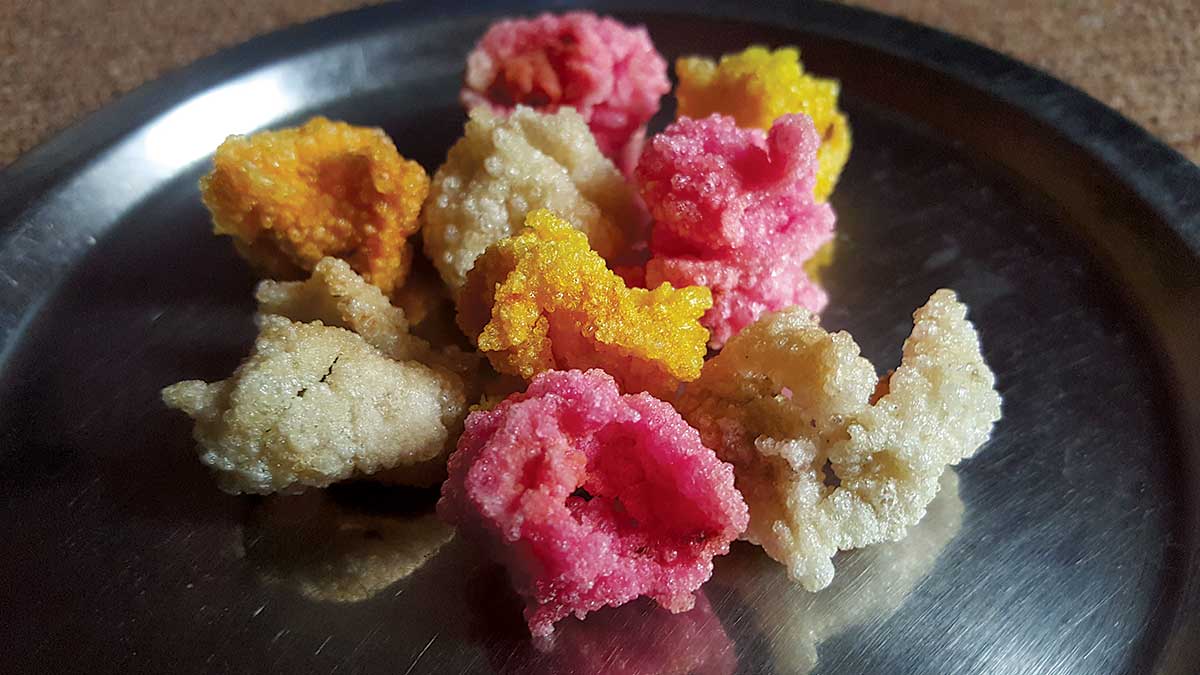At sacred sites and in religious forests all across Nepal we see monkeys. There are monkeys at Pashupatinath, at Gokarna forest, at Swayambhunath and at Thapathali near the Bagmati Bridge. Monkeys also form the theme for a collection of idols and icons in many religious sites. Many are statues of Hanuman. In Patan, at the four corners of the golden temple complex (Hiranya Varna Mahavihar) the bronze statues depict monkeys holding jack fruit or mangos.
To find out what the statues mean, we look to the Jataka Tales, that have been used for centuries as vehicles of Buddhist ethical teachings. The Buddha obviously lived at a time when there were many monkeys and used them as characters in the stories he told to explain difficult concepts. In one story thousands of monkeys live in a large fruit tree that overhangs a river. One monkey is aware of a large city downstream and worries that if any jack fruits float down and the people come looking for the source, the monkeys will be in danger. Sure enough, when one fruit drops and goes down river, a crowd comes looking. They find the tree, and archers are brought in to get rid of the monkeys. The good monkey quickly makes a reed bridge from the tree to the other bank, but it is short by the length of this body, so he stretches himself across the last few feet allowing all the monkeys to escape.
There are many stories told about compassion and care for the members of your sangha, or community. Next time you visit the Golden Temple look for the bronze monkeys at each corner, holding the mango or jackfruit. Monkeys today are under threat due to encroachment on their habitat and being used to test drugs and cosmetics before marketing them to humans. They are also captured for food in some countries. As many conservation ads tell us, the killing will stop only when the buying stops. In the debates about Creation and Evolution, the monkey is usually the central conversation piece. The only problem is that I still have not been able to answer my daughter’s question: “If man evolved from monkeys, how come we still have monkeys?” Anyone?
There are many ways in which Nepalese society uses the monkey to describe human behavior. My favorite among these is translated as ‘coconut in a monkey’s hands’. Many people are holding very valuable, important, rare and once in a lifetime opportunities in their hands, but just cannot figure out what to do with them. The monkey tries to figure out what to do with the coconut and when he fails, it may actually end up being used as a weapon! Humans do the same. Over the past two decades, ‘democracy in the hands of political parties’ has been referred to as ‘a coconut in the monkey’s hands’.
Another great tale is about a cap seller who is traveling between villages selling the traditional Nepali topi. As he approaches a village, he comes across a stone water fountain and a shaded stone platform with two huge “baar and pipal” trees. He washes himself, then takes a nap with the sack of caps next to him. He is awakened by the noise of many monkeys jumping on the branches and sees, to his dismay, that they are wearing his caps. He becomes angry and chases the monkeys with a stick to try and get back his caps. After a long and frustrating time, the trader gives up and in total abandonment throws his own cap on the ground. A strange thing happens—all the monkeys throw their caps down the same way! In the development field, many people are criticized because they preach water but practice wine.
The relieved cap seller collects all of his goods and happily moves towards the village. The moral of the story is simple: You can shout at people, you can chase them with a stick; but, ultimately, the only thing that will matter is what you do! People are watching what the leaders of new Nepal do—not what they say or ask us to do, even with a stick! If you do not like the medicine yourself, do not prescribe it to others.
Some lesser-known vegetable dishes from the southern plains
I’m not a vegetarian but I love vegetables. And whenever I get to the southern plains of Nepal, I try...










